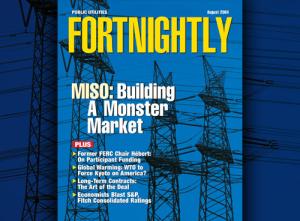Assimilating the best of the regulated-utility and merchant models.
Larry Eisenstat is a partner with Dickstein Shapiro Morin & Oshinsky LLP and head of the firmʼs electric power practice. Pat Alexander and Don Gelinas are energy consultants with Dickstein Shapiro.
Vertically integrated utilities (VIUs) have served us well and do not need to be dismantled in the name of competition. That said, VIUs need to address, once and for all, the legitimate, although sometimes unfounded, concerns of the Federal Energy Regulatory Commission (FERC) and a number of market participants over vertical market power and the incentive that some VIUs have to wield that power to foreclose competitive suppliers from accessing transmission and competing for the wholesale purchasers that this transmission serves. The largest among these purchasers are the VIUs themselves, given their often huge native load obligations.

In theory, a fully functioning RTO with well-structured markets is intended to eradicate both forms of foreclosure. Yet, in many areas, RTO development is stalled, if not dead, due in large part to concerns of state regulators that FERC needlessly has interfered with state prerogatives and inflexibly ignored regional differences.
Moving forward, VIUs can put the vertical market power issue behind them and immediately capture for themselves and their customers many of the benefits of an RTO by:

